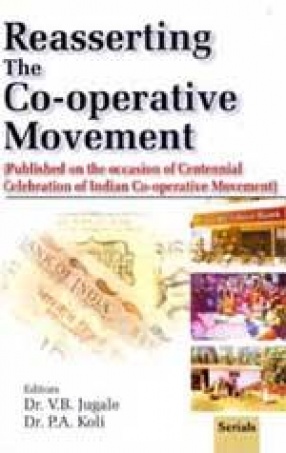
V.B. Jugale

Showing all 18 books










This book is an outcome of research conducted by the author during the years 2006-08. A large area of sugarcane belt is falling under the saline barren land in western Maharashtra. Irrigation has been introduced as a part of development activity so as to serve the raw material to the sugar industry. Farmers have lavishly applied the chemical fertilizers for growing the sugarcane in the belt. This has caused to damage the fertility of the soil. The cost of ...




The papers in the Volume have diversified issues encountered with growth, globalization and poverty. There are three dimensions in the papers presented in the Volume. Some papers deals with theoretical relevance of globalization to the selected macro economic variables and sectors in the Indian economy. Growth to some extent reduces the poverty, but if the growth, led by globalization results to increase in poverty, then the matter becomes more serious for the ...

Horticulture Economy of Maharashtra is the outcome of a research work conducted under UGC SAP-DRS. The book covers the horticulture geography of Maharashtra and the major horticulture pockets in the state. The state has potential opportunity to develop this sector compared to the agriculture practices in the state. The state can be called as ‘horticulture state’ if the government encounters with suitable policy measures with visionary actions. The book ...

Nowadays credit ‘serves as an elavator’. It no more “Supports the farmers as the hangman’s rope supports the hangedâ€. Credit is essential because agriculture takes months to obtain the yield. The present monography attempts to deal with the impact of co-operative credit on socio-economic and technological aspects of agriculture sector. The real success of co-operative credit depends on micro-level achievements of the PACS and PLDBs. The PACS are ...

The structural adjustment programmes are basically the reforms programmes, designed for the socialist and mixed economies. The establization polices are the policy programmes designed to bring the short term economic balances. The SAP programmes paved the way to liberalization and globalization for widening the market economies. With the expansion of globalisation programmes, the poverty issues became debatable. The studies reflect mixed reactions about the ...

Financial sector in fact is the brain of the body economy. The traditional economists have never considered the significance of the finance. The finance in reality was given a status of second class citizen in the economic literature. Obviously, the need has emerged to rewrite the monetary economics in the framework of this background. There is an urgent need to explore the general theory of finance in a given economic system with inbuilt linkages with other ...

This book is concerned with the Development of Cooperative Movement in India which has taken place since 1904. It is high time to review the working of cooperatives as the cooperative movement in India has completed its 100 years of working. During this time it has proved that the cooperatives have remained as the shield in the hands of weaker section of society especially, farmers, wage earners and women, etc. Further it has been recognized as a golden mean ...

The World Trade agreement is proved to be a major breakthrough in the history of the world trade. It was sought member of challenges and opportunities to the trading countries in general and trading communities in particular. The WTO provides a new legal basis for the world trade in goods and services, the protection of intellectual property rights and to a lesser extent trade related investments. The services industry as it is acknowledged to knowledge based ...

This volume introduces various problems of post-globalisation economic activities in India. The rethinking about the present mode of globalisation are the thrust of this volume. It accounts for the cross culture of MNCs, capital account convertibility, trends in FDI and its impact, agriculture and non-agriculture scenario, role of states, consumer’s interest, impact on tribal communities, impact on banking sector and the emerging trends and issues in higher ...


The rationale behind bringing this volume for the perusal of the readers is to acknowledge the research related to demography, inequality and the gender issues focused by the paper writers on various related aspects. The demographic issues are directly linked to economic vis-a-vis social activities. The fertility, poverty, inequality and gender discriminations are the trouble shooters in the development activities along with political instability in India. In ...

This volume exhibits scattered and diversified views and experiences of some growing economics of the world. The role of credit in Cocoa production and credit to the poors, fisheries, infrastructural issues, intra-industry linkages, G-8 and its substance, under valuation of currencies, burden adjustments and the public expenditure are the major areas of analysis. The comparative studies vis-a-vis their analysis in concern to the technical efficiencies in formal ...

This book is an outcome of the proceedings of the national level seminar on "An Agenda of Economic Reforms for the States in India" held in the Department of Economics, Shivaji University, Kolhapur in March 2005. The state governments have bighearted opportunities of socio-economic reforms on the eve of the liberalisation and globalization. Still the state governments are not so solemn of the reforms at their own levels. Most of the state governments ...

There are varieties of externalities generated by the economies for accelerating the domestic growth rates. This has puzzled the economic theorists all the time to explore the fact that why some economies grow much faster than others? Similarly, what is the rationale and mandate remains to the growth rate of developing countries as compared to the developed economics? This quality and quantity of growth rates adherence to the developing economies, no doubt, but ...
